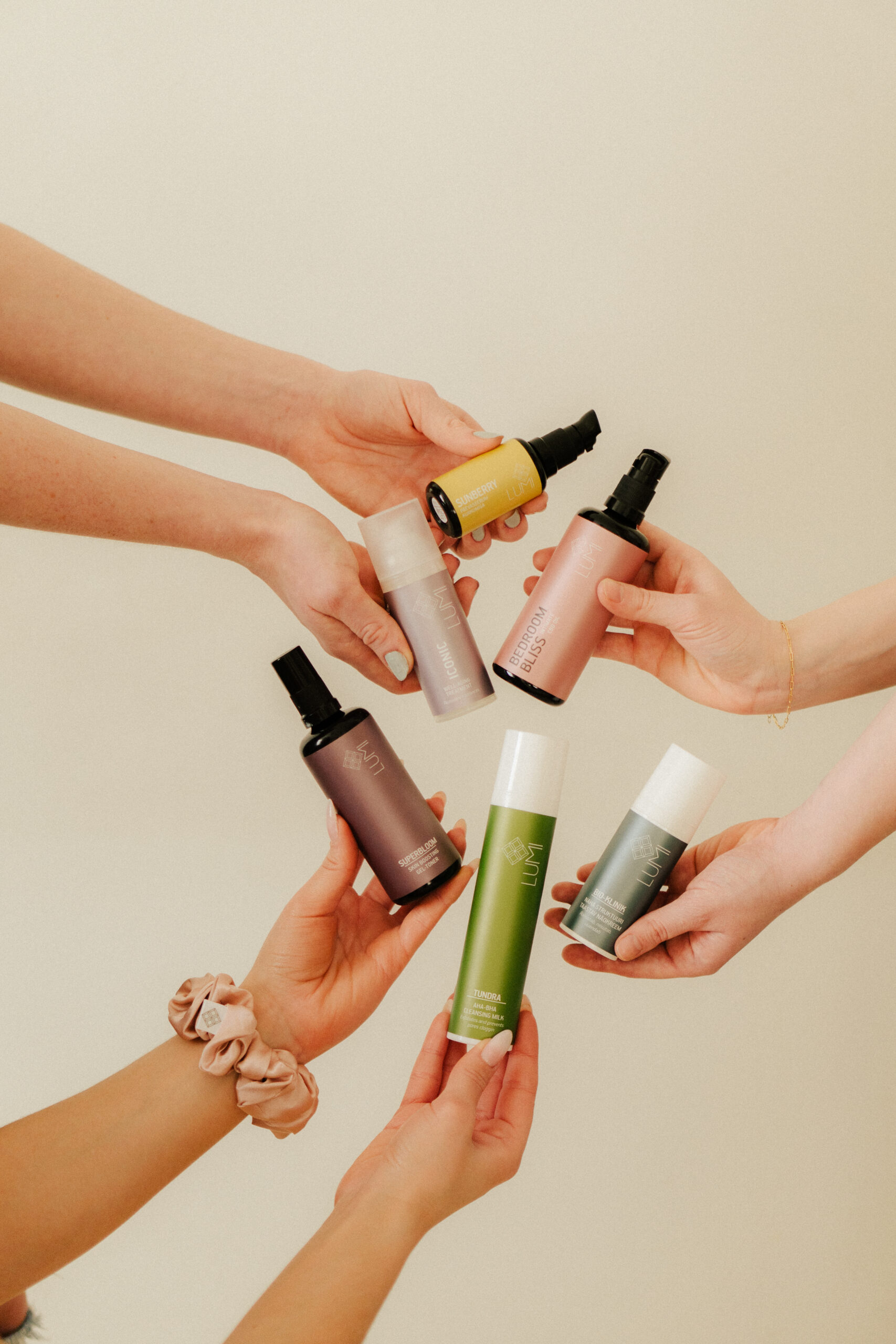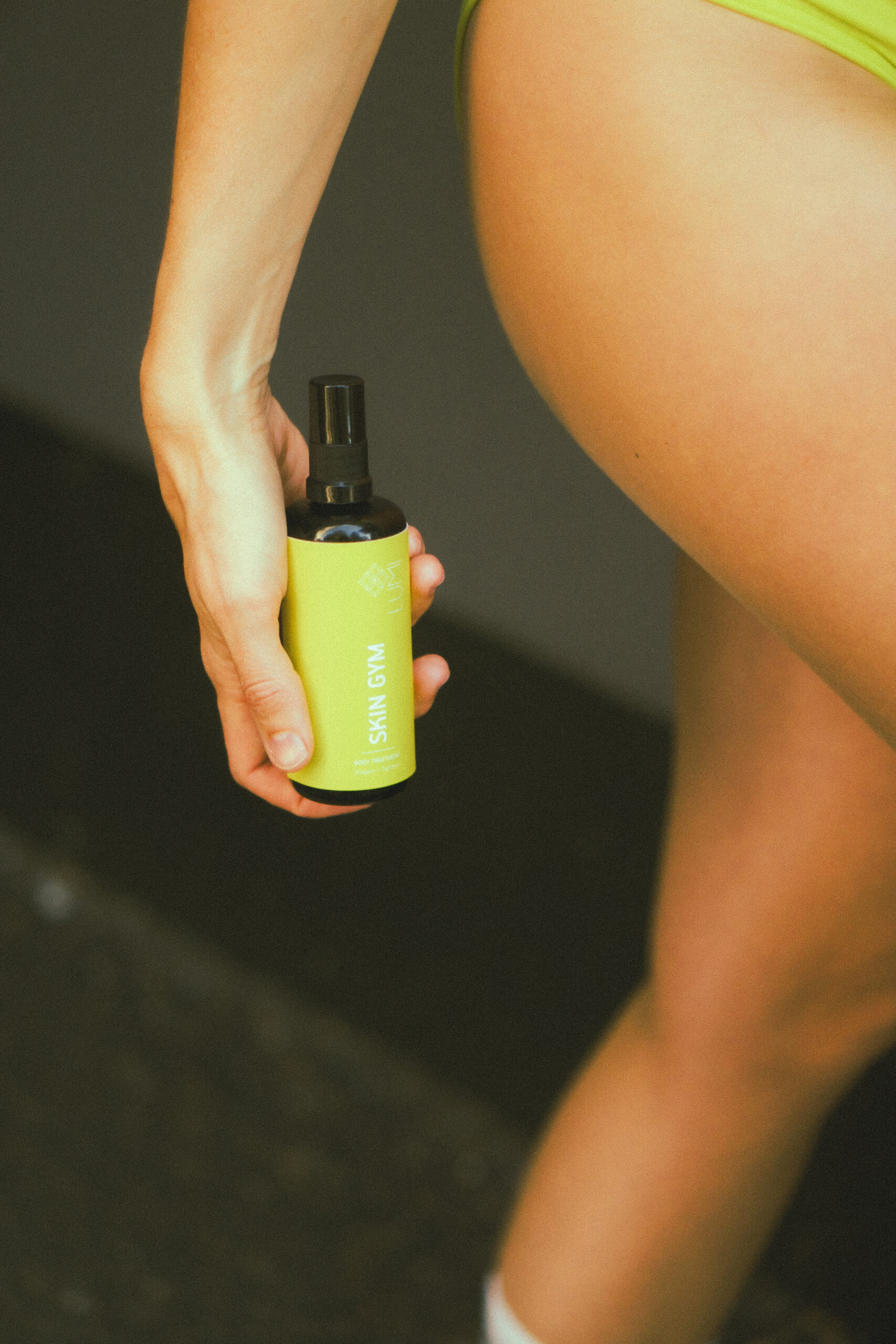The Microbiome – Your Skin’s Greatest Ally!
Part 1 of our article series on the importance of the skin microbiome!
Here at LUMI, we can’t go five minutes without mentioning the skin’s microbiome. We might talk about it more than any other topic, in fact! The reason we’re so obsessed is simple – maintaining a healthy microbiome is the single best thing you can do for your skin. But what is Here at LUMI, we can’t go five minutes without mentioning the skin’s microbiome. We might talk about it more than any other topic, in fact! The reason we’re so obsessed is simple – maintaining a healthy microbiome is the single best thing you can do for your skin. But what is the skin microbiome, we hear you ask, and why is it so important? Well, let’s find out by diving into all things microbiological!
What Is The Skin Microbiome?
Our skin is home to millions of microorganisms such as bacteria, fungi, and even viruses. We call this tiny but important community of life the microbiome of the skin. These microscopic lifeforms work with the human body and are integral to maintaining healthy skin.
The microbiome is our first line of defence against pathogens and other threats that might endanger our skin or the rest of our body. The layer of microbiota on the skin’s surface forms a physical barrier that prevents unwelcome microbes and substances from reaching the skin itself. When this barrier is broken or is not at its full protective capacity (because our microbiome is out-of-shape), we are more vulnerable to infection and skin degradation from environmental pollutants.
The benefits of the microbiome do not stop there, though! The microbiota on the surface of human skin helps retain moisture, minimise oxidative damage, and help to protect skin from UV radiation. Our immune systems actually communicate with bacteria on our skin’s surface and are used by the body to modulate a range of responses. The microbiome is even involved in repairing damaged skin and healing wounds!
It was discovered at the turn of the 21st century that some bacteria present within the human skin microbiome produce collagen-like proteins that help with skin maintenance. Collagen is the most abundant protein in the body and is vital for skin structure, elasticity, and signaling. Studies have shown that when the skin microbiome is damaged or in a state of serious imbalance (known as dysbiosis), levels of collagen production decrease, which can lead to premature aging and other skin health issues.
The impact of skin dysbiosis is not limited just to collagen production. A damaged or unbalanced microbiome has been shown to affect long-term skin health, as well as increasing the prevalence of diseases such as atopic dermatitis, psoriasis, rosacea, and acne. Research also suggests that the process of skin aging is in part associated with changes in the skin microbiome. Clearly, considering the intertwined nature of microbiome health and diversity with our own wellbeing, the skin’s microbiota cannot be ignored!

Phto: Caroline Sada
How Can I Help My Skin’s Microbiome?
With the microbiome being so essential to skin health, we all face an essential question – how can I maintain a happy, healthy, and diverse microbiome?
The first step, as with everything related to health, is to ensure your diet is varied and nutritious. By eating well, you give your body the resources it needs to properly control itself and make the surface of your skin the perfect environment for a thriving microbiome. Vegetables in particular are vital for skin health, whilst fermented foods such as kefir and sauerkraut help promote the health of microbiota both in the gut and on the surface of the skin.
For more targeted microbiome assistance, consider introducing probiotics and prebiotics to your skin. Probiotics are live microorganisms that are introduced to a microbiome to help repopulate or rebalance the microbial community. Prebiotics are selectively fermented ingredients designed to provide nutrition to and promote the growth of desirable microorganisms. Probiotics and prebiotics taken orally can improve the health of the gut microbiome (and through it, the rest of the body), whilst topically applied prebiotics and probiotics can greatly aid the skin’s microbiome.
All of LUMI’s products are designed with maintaining a healthy skin microbiome in mind. Our three guiding principles are embracing natural ingredients, cutting-edge science, and, most of all, balance. Never is this more important than when considering the needs of the billions of microbiota that call our bodies home.
You can see the results of this thinking in the decisions we make during production. Our cleansers never contain any surfactants or foaming agents, as these have been shown to disrupt the skin barrier and microbiome. In a similar vein, none of our products will ever contain added fragrances or preservatives – both can disrupt your microbiome and create, rather than solve, skin problems. We make liberal use of the polysaccharide hyaluronic acid in lots of LUMI products, which has been shown by several research studies to be the optimal prebiotic for restoring microbiome balance.
We offer a range of products crafted especially to restore and maintain your skin microbiome. There are far too many to list here, but a few highlights that we think you’ll love are the Atopic Smoothie Set, the NAKED Hyaluronic Acid Multiserum, and the 40 & ICONIC Set, all of which contain prebiotics and other helpful ingredients that are perfect for getting your microbiome back to its best!
Ready to take the first steps towards a happier, healthier microbiome? Talk to one of our LUMI skin experts today and find the products most suited to your individual needs – your skin will thank you!
References:
-
Al-Ghazzewi, F. H., & Tester, R. F. (2014). Impact of prebiotics and probiotics on skin health. Beneficial microbes, 5(2), 99–107. https://doi.org/10.3920/BM2013.0040
-
Boxberger, M., Cenizo, V., Cassir, N., et al., (2021). Challenges in exploring and manipulating the human skin microbiome. Microbiome, 9, 125. https://doi.org/10.1186/s40168-021-01062-5
-
Byrd, A. L., Belkaid, Y., & Segre, J. A. (2018). The human skin microbiome. Nature Reviews Microbiology, 16(3), 143–155. https://doi.org/10.1038/nrmicro.2017.157
-
Habeebuddin, M., Karnati, R. K., Shiroorkar, P. N., Nagaraja, S., Asdaq, S. M. B., Khalid Anwer, M., & Fattepur, S. (2022). Topical Probiotics: More Than a Skin Deep. Pharmaceutics, 14(3), 557. https://doi.org/10.3390/pharmaceutics14030557
-
Ratanapokasatit, Y., Laisuan, W., Rattananukrom, T., Petchlorlian, A., Thaipisuttikul, I., & Sompornrattanaphan, M. (2022). How Microbiomes Affect Skin Aging: The Updated Evidence and Current Perspectives. Life (Basel, Switzerland), 12(7), 936. https://doi.org/10.3390/life12070936
-
Rozas, M., Hart de Ruijter, A., Fabrega, M. J., Zorgani, A., Guell, M., Paetzold, B., & Brillet, F. (2021). From Dysbiosis to Healthy Skin: Major Contributions of Cutibacterium acnes to Skin Homeostasis. Microorganisms, 9(3), 628. https://doi.org/10.3390/microorganisms9030628
-
Russo, E., Di Gloria, L., Cerboneschi, M., Smeazzetto, S., Baruzzi, G. P., Romano, F., Ramazzotti, M., & Amedei, A. (2023). Facial Skin Microbiome: Aging-Related Changes and Exploratory Functional Associations with Host Genetic Factors, a Pilot Study. Biomedicines, 11(3), 684. https://doi.org/10.3390/biomedicines11030684
-
Yu, Z., An, B., Ramshaw, J. A., & Brodsky, B. (2014). Bacterial collagen-like proteins that form triple-helical structures. Journal of structural biology, 186(3), 451–461. https://doi.org/10.1016/j.jsb.2014.01.003
-
Zorgani, A., Beckermann, L., Brillet, F., Yvon, P. (2023). Cutibacterium acnes: paradigm shift for skin health from pathogens to assets in healthy aging and beyond. HPC Today, 18(2), 6-9. https://www.teknoscienze.com/tks_article/cutibacterium-acnes-paradigm-shift-for-skin-health-from-pathogens-to-assets-in-healthy-aging-and-beyond/

